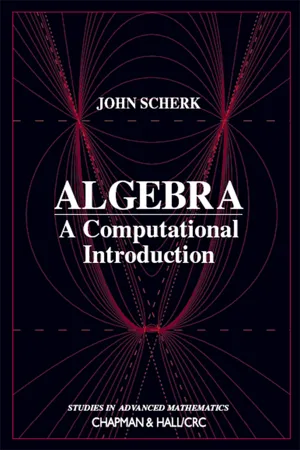
- 336 pages
- English
- ePUB (mobile friendly)
- Available on iOS & Android
About This Book
Adequate texts that introduce the concepts of abstract algebra are plentiful. None, however, are more suited to those needing a mathematical background for careers in engineering, computer science, the physical sciences, industry, or finance than Algebra: A Computational Introduction. Along with a unique approach and presentation, the author demonstrates how software can be used as a problem-solving tool for algebra. A variety of factors set this text apart. Its clear exposition, with each chapter building upon the previous ones, provides greater clarity for the reader. The author first introduces permutation groups, then linear groups, before finally tackling abstract groups. He carefully motivates Galois theory by introducing Galois groups as symmetry groups. He includes many computations, both as examples and as exercises. All of this works to better prepare readers for understanding the more abstract concepts.By carefully integrating the use of Mathematica® throughout the book in examples and exercises, the author helps readers develop a deeper understanding and appreciation of the material. The numerous exercises and examples along with downloads available from the Internet help establish a valuable working knowledge of Mathematica and provide a good reference for complex problems encountered in the field.
Frequently asked questions
Information
Table of contents
- Cover
- Half Title
- Title Page
- Copyright Page
- Table of Contents
- Preface
- 1 Congruences
- 2 Permutations
- 3 Permutation Groups
- 4 Linear Groups
- 5 Groups
- 6 Subgroups
- 7 Symmetry Groups
- 8 Group Actions
- 9 Counting Formulas
- 10 Cosets
- 11 Sylow Subgroups
- 12 Simple Groups
- 13 Abelian Groups
- 14 Polynomial Rings
- 15 Symmetric Polynomials
- 16 Roots of Equations
- 17 Galois Groups
- 18 Quartics
- 19 The General Equation of the nth Degree
- 20 Solution by Radicals
- 21 Ruler-and-Compass Constructions
- Appendix: Mathematica Commands
- References
- Index